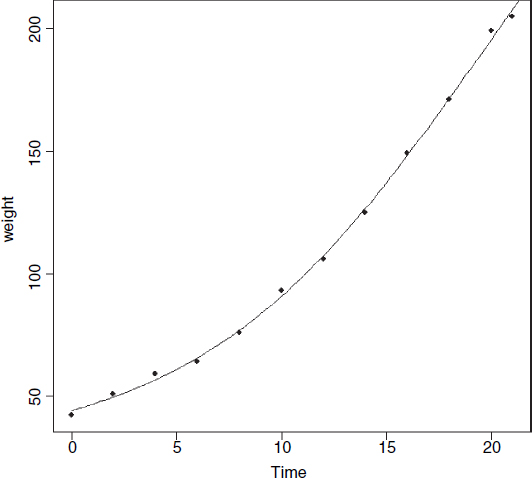Self-starting four-parameter logistic
This model allows a lower asymptote (the fourth parameter) as well as an upper:
data<-read.table("c:\\temp\\chicks.txt",header=T) attach(data) names(data) [1] "weight" "Time" model <- nls(weight~SSfpl(Time, a, b, c, d)) xv<-seq(0,22,.2) yv<-predict(model,list(Time=xv)) plot(weight~Time,pch=16) lines(xv,yv) summary(model) Formula: weight~SSfpl(Time, a, b, c, d) Parameters: Estimate Std. Error t value Pr(>|t|) a 27.453 6.601 4.159 0.003169 ** b 348.971 57.899 6.027 0.000314 *** c 19.391 2.194 8.836 2.12e-05 *** d 6.673 1.002 6.662 0.000159 *** Residual standard error: 2.351 on 8 degrees of freedom
The four-parameter logistic is given by
![]()

This is the same formula as we used in Chapter 7, but note that C above is 1/c on p. 203. A is the horizontal asymptote on the left (for low values of x), B is the horizontal asymptote on the right (for large values of x), D is the value of x at the point of inflection of the curve (represented by xmid in our model for the chicks data), and C is a numeric scale parameter on the x axis (represented by scal). The parameterized model would be written like this:
![]()
Self-starting Weibull growth function
R's parameterization ...
Get The R Book now with the O’Reilly learning platform.
O’Reilly members experience books, live events, courses curated by job role, and more from O’Reilly and nearly 200 top publishers.

